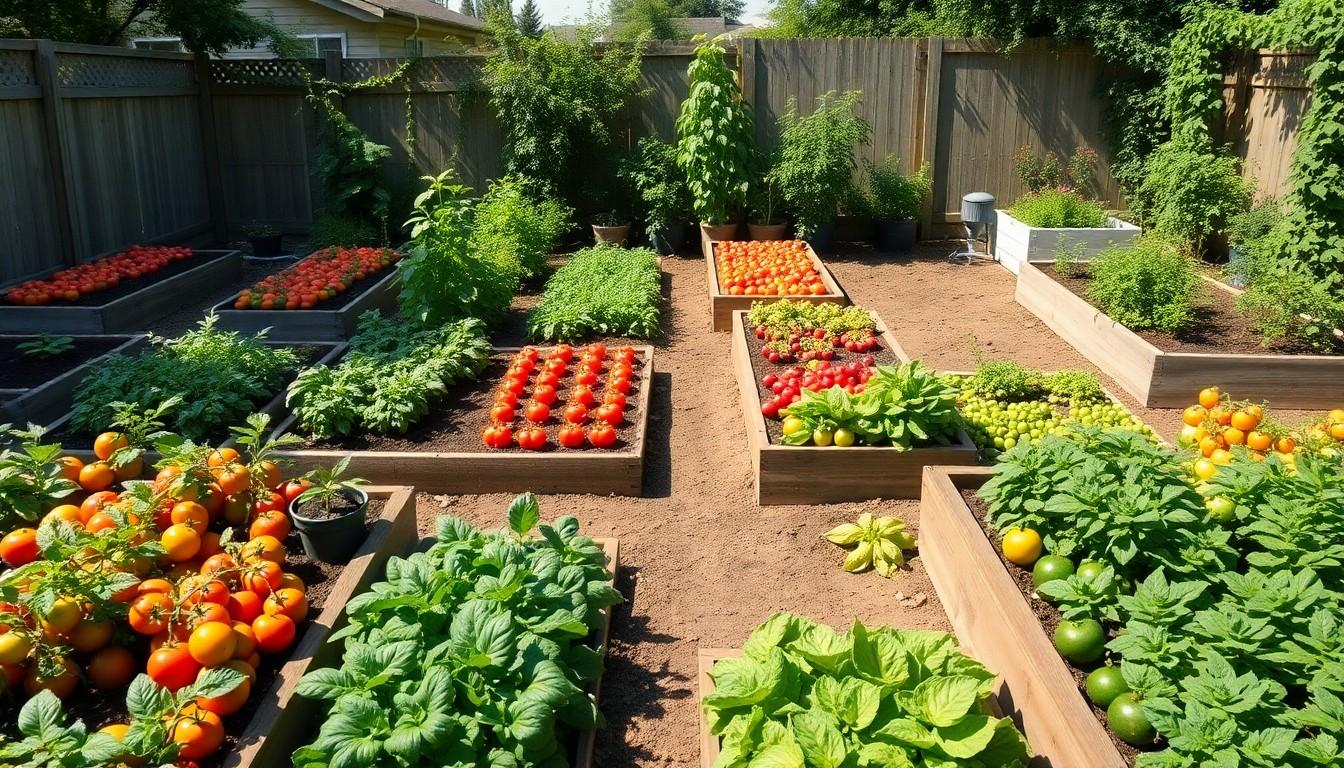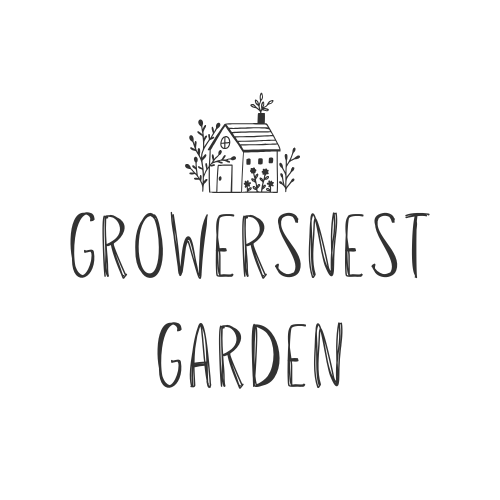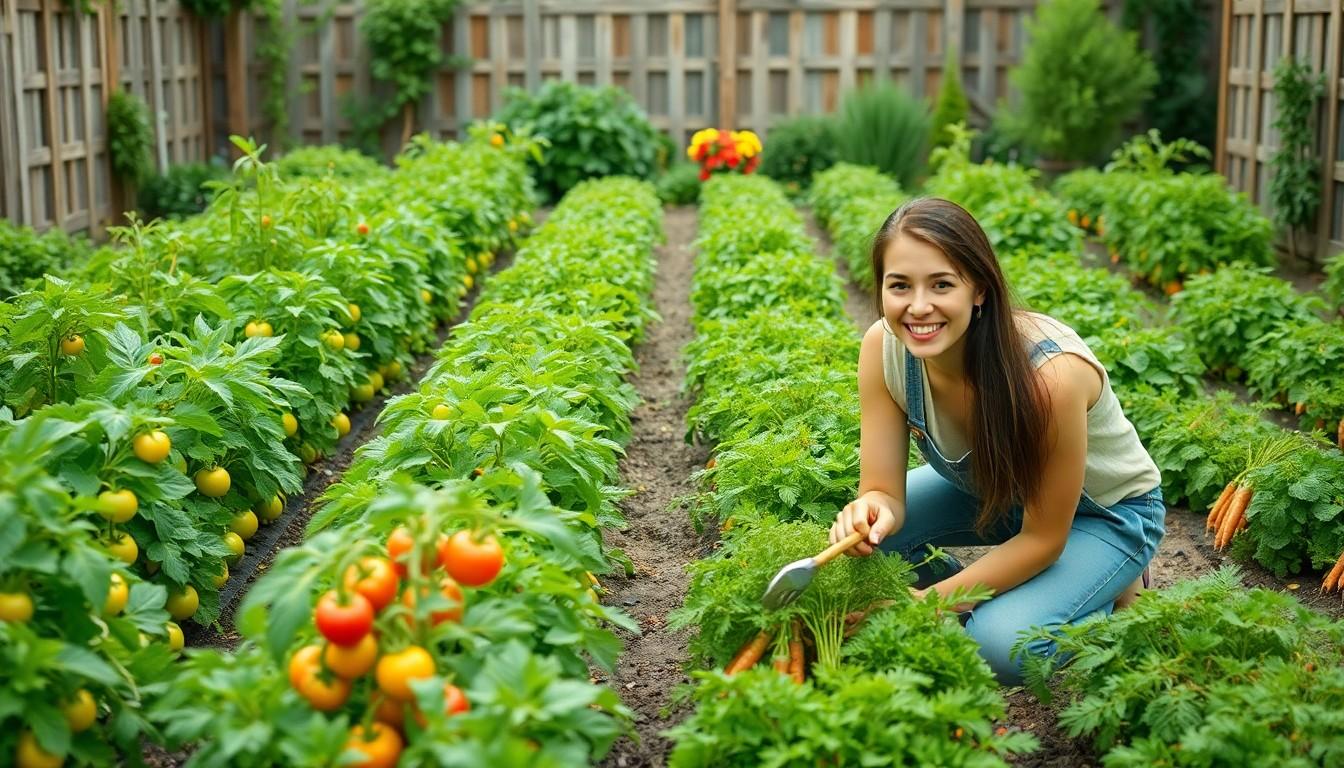Creating a vegetable garden can feel like a daunting task, but it doesn’t have to be. With the right layout template, even the most novice gardener can transform a patch of dirt into a thriving green paradise. Imagine stepping into your backyard and being greeted by rows of vibrant tomatoes, leafy greens, and crunchy carrots, all perfectly organized and easy to maintain. Sounds dreamy, right?
Benefits Of A Vegetable Garden Layout Template
Using a vegetable garden layout template enhances the gardening experience. It streamlines the process for any gardener, providing clarity and direction.
Organization And Efficiency
A layout template promotes organization within a garden. It guides the placement of vegetables, ensuring proper spacing and orientation. This method prevents overcrowding, which often leads to competition for nutrients. It allows gardeners to track growth patterns effectively. Utilizing designated rows or sections simplifies maintenance tasks like weeding and harvesting. Efficient organization maximizes productivity and keeps the garden looking tidy, directly impacting the overall success of the gardening efforts.
Maximizing Space
Maximizing space in a vegetable garden fosters higher yields. A thoughtful layout template encourages vertical gardening techniques using trellises for climbing plants. It maximizes sunlight exposure by placing taller plants to the north. Grouping similar plants together creates companion planting opportunities that enhance growth and deter pests. Gardeners can implement intensive planting methods, like square foot gardening, to utilize every inch. An optimized layout ensures that gardeners grow a diverse range of vegetables, ultimately leading to a bountiful harvest.
Types Of Vegetable Garden Layout Templates

Various vegetable garden layout templates enhance gardening experience. These templates provide structure, ensuring efficient use of space and optimal growth.
Square Foot Gardening
Square foot gardening involves dividing a garden into square sections, typically one foot by one foot. Each section contains a specific type of vegetable, promoting diversity and maximizing yield. Gardeners enjoy higher productivity due to efficient planting techniques. This method simplifies care, allowing easy access for weeding and harvesting. Utilizing raised beds can further optimize this layout, providing improved soil quality and drainage. With this system, maintaining order becomes manageable, even for beginners.
Row Gardening
Row gardening arranges vegetables in long, straight rows, making it easy to navigate. This traditional method accommodates larger plants like tomatoes and peppers, which benefit from spacing. Rows allow for efficient irrigation, as water travels easily down the channels. It also simplifies maintenance tasks such as weeding and pest control. Adopting this layout is suitable for larger gardens, providing ample space for crop rotation. Many gardeners opt for this method due to its straightforward nature and effectiveness in producing ample harvests.
Raised Bed Gardening
Raised bed gardening involves creating planting areas above ground level, enhancing drainage and soil quality. This layout enables gardeners to customize soil conditions for specific vegetables. Additionally, raised beds promote better pest management, as they can deter certain ground-dwelling insects. They offer a more ergonomic option for planting and maintenance, reducing strain on the back and knees. This technique increases growing space and often extends the growing season. Many practitioners appreciate the aesthetic appeal and organized look of raised beds, making them a popular choice for home gardens.
Tips For Creating A Custom Vegetable Garden Layout Template
Creating a personalized vegetable garden layout template requires careful planning. Focus on the available space and how to optimize it effectively.
Assessing Your Space
Evaluate your garden area first. Determine sunlight exposure, soil quality, and drainage patterns to ensure optimal growth. Consider the size of the garden; larger spaces can accommodate more diverse planting, while smaller areas may require creative solutions like vertical gardening. Measure the plot to understand dimensions and make effective use of those measurements. Soil type contributes significantly to plant health; it’s wise to test for pH levels and nutrients before planting. Identify any obstacles, such as trees or structures that may block sunlight. Understanding these factors helps in designing a layout that thrives.
Choosing The Right Vegetables
Select vegetables based on climate and personal preference. Consider growing season lengths and pick vegetables that thrive within those timelines. Research companion planting to enhance growth; certain plant combinations can deter pests and promote healthy development. Focus on favorite vegetables to encourage regular gardening activities. Make room for high-yield crops, as they often provide substantial returns on effort. Don’t forget about the garden’s aesthetics; colorful vegetables can make the garden visually appealing. Prioritize plants that mature at different times for continuous harvests, ensuring variety throughout the season.
Tools And Resources For Vegetable Garden Layout Templates
Various tools and resources simplify creating vegetable garden layout templates. These solutions cater to different preferences and skill levels, ensuring everyone can enjoy gardening.
Software And Apps
Numerous software programs and applications assist in designing garden layouts. These tools allow users to visualize space, dragging and dropping vegetables into the grid. Popular options include Garden Planner, which provides an extensive library of plants, and GrowVeg, known for its step-by-step guides. Both reduce planning time and enhance organization. Users can even track growth progress and receive reminders for maintenance tasks. By utilizing digital solutions, gardeners access customizable layouts that adapt to various garden sizes and styles.
Printable Templates
Printable templates offer an accessible option for those who prefer physical planning tools. Various designs exist, from simple grids to elaborate layouts tailored for specific vegetables. These templates facilitate quick sketching and easy modifications. Several online resources provide free downloads, making it convenient to find the right fit. Customization options inspire creativity, allowing gardens to reflect personal preferences. Those who utilize printable templates often experience enhanced organization, leading to productive gardening seasons.
Conclusion
Creating a vegetable garden can be a rewarding experience that transforms any space into a productive oasis. With the right layout template in hand, gardeners can cultivate a diverse array of vegetables while maximizing their garden’s potential. The benefits of organization and strategic planning can’t be overstated, as they lead to healthier plants and higher yields.
By exploring different layout options and utilizing available tools, anyone can tailor their garden to fit their unique needs and preferences. Whether opting for square foot gardening or raised beds, the journey of growing vegetables becomes not just manageable but enjoyable. Embracing these techniques ultimately paves the way for a flourishing garden and a bountiful harvest.

